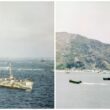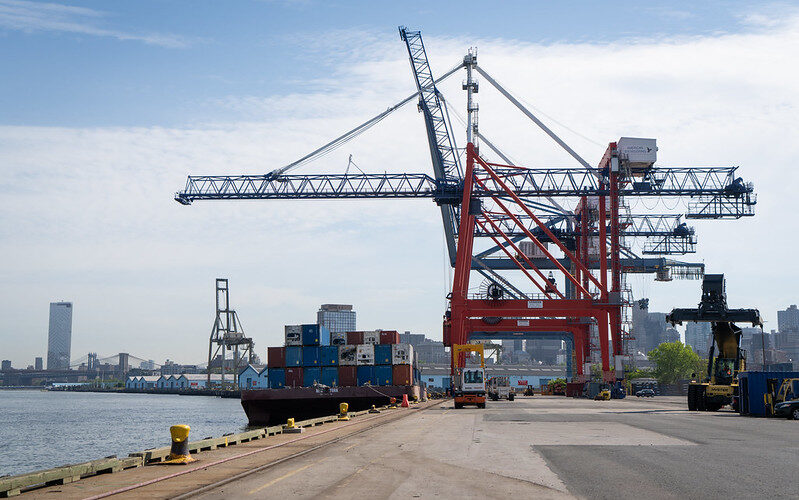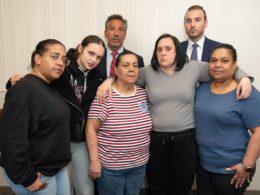As New York looks to its future, it must grapple with a dramatically rising cost of living, critical resilience needs for the escalating threat of climate change, crippling congestion in last mile communities, and the need for innovative economic and workforce development to provide more jobs to communities around the city that are getting left behind.
At the 122-acre Brooklyn Marine Terminal in Red Hook, the city, state and federal government are nearing completion of a planning process that presents a once-in-a-generation opportunity to address all of the above.
For the past eight months, a partnership among the city, the state, and 28 Task Force members made up of elected officials, community based organizations, regional planning experts, and local residents has been busy.
Working along with six advisory groups comprised of more than 60 additional subject matter experts, they have engaged in a rigorous, intensive, community-driven process to reimagine the Brooklyn Marine Terminal, centered around a state-of-the-art, modern container terminal and a hub for a Blue Highway system to transport freight around the tri-state area.
Once a critical node for commerce in one of America’s busiest waterways — and still the only port on the east side of the Hudson River — the Brooklyn Marine Terminal is now a shell of its former self due to decades of neglect from the Port Authority, until recently the owner and landlord of the Terminal.
The majority of the Terminal’s piers are either completely unusable or potentially months away from catastrophic collapse. As the infrastructure and investment have declined, so have the number of good-paying union jobs.
At the same time, we are facing a generational housing crisis that makes it almost impossible for middle- and lower-income families to remain in the city. Average rents are at an all-time high, vacancy rates hover at or below 1%, and there is little new supply in the pipeline to match the demand, especially for affordable housing.
This is particularly true in the Red Hook neighborhood directly adjacent to the Terminal, which has seen approximately 560 units of housing created over the last decade, 2% of which qualify as affordable. By contrast, the neighborhoods to the north and east have created approximately 1,800 units.
Last spring, the city boldly took the initiative to break the stagnation that has plagued the Terminal for decades and, along with the state, engineered a land swap with the Port Authority so that the city could take control of the site and redevelop it.
As part of that agreement, the city agreed to invest $80 million to restore part of the Terminal to working order, the state added an initial $15 million investment, and, partially because of this momentum, we were able to secure a $164 million federal grant — the largest federal grant in the New York City Economic Development Corp. history — to fix two of the condemned piers.
To date, there are government commitments of approximately $350 million to repair and reimagine the port, and we are optimistic that more public funding will be forthcoming.
In addition to the initial public investment, elected officials insisted on the creation of a Task Force to not only oversee the master planning process but to preserve final approval over that master plan. This ensured a vital guarantee that the local community would drive the process.
For a variety of reasons — including the deteriorating state of the Terminal, the city and state budgeting schedule, and the timing of the federal grant — the Task Force and EDC have been aggressively working on a condensed schedule to finalize a plan that can reimagine the Brooklyn waterfront. The culmination of that process will occur in April when the Task Force votes on a final master plan if there is not unanimous support.
The current iteration of the master plan framework for the Brooklyn Marine Terminal will result in a transformed, electrified 60-acre port capable of significant expansion that could increase annual container volume by as much as 50%; a central node for a Blue Highway system that will transport freight around the city by barge, which, along with dedicated cold storage space, will drastically reduce reliance on truck traffic; and a redeveloped cruise terminal for year-round activation with zero on-site emissions and integrated shore power.
In addition, the site will incorporate and expand existing critical resiliency efforts to prevent flooding from the next superstorm. It will also include 250,000 square feet of manufacturing and industrial space, workforce development programs, and 30 more acres of accessible green space that will revitalize Red Hook’s identity as a hub for light industry and manufacturing and create much needed parks and access to the waterfront that does not currently exist there.
The plan also includes additional public transportation to accommodate what is currently a transit desert.
Finally, the current plan calls for a significant investment in housing, including at the woefully underserved Red Hook Houses. This plan would create approximately 8,000 new units, 35% of which would be designated permanently affordable at 60% of the Area Median Income (ranging from 40% to 80% to account for the range of need in the community).
An additional $200 million will be dedicated to capital improvements at the Red Hook Houses, and $50 million will be set aside for an affordable housing reserve fund and home ownership assistance.
The additional housing serves two purposes: first, it helps to address the shortage of housing supply, putting deflationary pressure on rent burden in Brooklyn and across the city. Second, the new housing will provide essential subsidization for the port renovation. While I and the other elected officials representing the area continue to push for more government funding and increased affordability, we must have a default plan in place that can finance a project of this magnitude.
All told, this plan includes upwards of $1.3 billion in community benefits to jumpstart a Red Hook renaissance.
Around the country, we are facing a crisis where local governments too often are paralyzed with indecision, preventing progress and stifling growth and development. New York City and State are both suffering from significant population migration because it’s too expensive to live here and our web of laws, rules and regulations simply makes it too difficult to effectively address those problems.
Right now, this city and state needs bold leadership that makes government part of the solution, not the problem. We need our community and elected leaders to find a way to get to “yes,” rather than too often catering to legitimate but parochial reasons to get to “no.”
The proposed reimagination and redevelopment of the long-neglected Brooklyn Marine Terminal provides such an opportunity for bold government action. We must seize that opportunity.
As with any redevelopment, there is no perfect plan that satisfies everyone’s wishes. Although previous plans for the same site would have eliminated the port altogether in order to build as many as 45,000 housing units, some have objected to any housing on this public land. In the face of the current housing crisis, redeveloping 122 acres in the city without any housing would be government malpractice.
Through four public workshops across 24 sessions, nine Task Force meetings, weekly office hours, individual community engagement and extensive conversation with the advisory groups, the Task Force and project team have sourced input from more than 3,000 members of the local community.
The resulting plan has been designed with a modern container terminal at its center while also accounting for the community’s stated wishes to maintain Red Hook’s identity as an industrial hub for Brooklyn, environmental justice concerns from last-mile congestion, and public transportation improvements. While perhaps imperfect, the master plan demonstrates a bold vision for the future of New York City that has been driven by community input.
To be “progressive” is to seek progress, which requires action. For too long, elected officials in this city have been handcuffed by inaction due to a risk aversion that caters to a loud minority that often is well-housed and unburdened by their grocery bill or medical expenses. The status quo simply must change.
Our great city is stagnating. The place that has fueled the dreams and aspirations for generations of Americans has become a national punchline for its inability to meet even the most basic needs of its residents — first among them: housing. We cannot simultaneously say that housing is a human right while making it impossible to build enough to provide that right.
New York must return to its roots. We live in the greatest city in the world because of the ambition and ingenuity that propels us to do great things. We built the Empire State Building in 13 months. We built the first suspension bridge in the country. No city can match our excellence across so many industries.
But that exceptionalism stemmed from bold vision and an ability to accomplish big things.
This plan at the Brooklyn Marine Terminal offers us an opportunity to reclaim that exceptionalism.
I encourage those who serve with me on the Task Force to discard the status quo and choose bold action that will create jobs, reduce congestion and pollution, build housing, provide resiliency, and improve the quality of life for our constituents. Squandering this once-in-a-generation opportunity would be a mistake we will regret.
Goldman’s congressional district includes the Brooklyn Marine Terminal.








